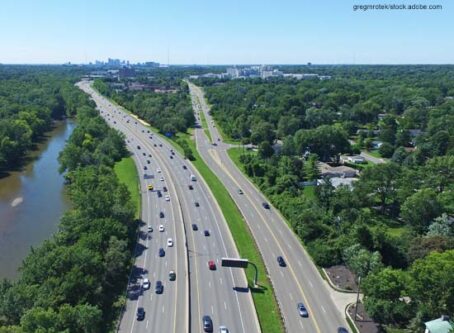OOIDA raises concerns over Tesla’s Full Self-Driving system
The Owner-Operator Independent Drivers Association has sent a letter to the National Highway Traffic Safety Administration expressing concerns over Tesla’s Full Self-Driving system.
On Wednesday, Nov. 4, OOIDA cautioned NHTSA of the safety implications to truckers and other motorists of Tesla’s Full-Self Driving system. In October, Tesla released the Full Self-Driving software to certain customers, with all Tesla owners having an option to upgrade to the software for $10,000. Despite the name, the software does not allow Tesla vehicles to completely take over driving operations.
In its letter to NHTSA, OOIDA pointed out that the majority of truck-involved crashes are caused by passenger vehicles. Consequently, misleading technology like Tesla’s Full Self-Driving system jeopardizes the safety of truckers and other motorists.
“Therefore, we are dismayed with the Administration’s lack of oversight of automated driving technologies currently deployed on public roadways that jeopardize truckers’ safety,” OOIDA President Todd Spencer states in the letter. “The use of unfinished and unproven automated technologies poses a significant threat to small-business truckers, and we urge you to take action to protect all road users and promote greater transparency and oversight of their development.”
OOIDA argues that Tesla is using “untrained customers to essentially use public roads as their test track for a beta technology.” The Association points to Tesla’s own description of the Full Self-Driving system, which states the software “may do the wrong thing at the worst time.”
Essentially, OOIDA is concerned about the lack of federal action when it comes to Tesla’s Full Self-Driving system.
Before rolling out the technology, Tesla informed NHTSA of its plans. The administration said it will monitor the situation.
“The agency will monitor the new technology closely and will not hesitate to take action to protect the public against unreasonable risks to safety,” NHTSA said in a statement.
When it comes to autonomous vehicle technology, there is only vague and voluntary guidance coming from the federal government. In comments submitted to NHTSA regarding its AV guidance, AV 4.0, OOIDA said the guidelines just continued the shortcomings of its predecessor, AV 3.0. OOIDA said that AV 3.0 “lacked substantive data to support its ‘vision,’ and prematurely proposed eliminating a human driver from operating an automated CMV.”
OOIDA compared the lack of federal oversight on autonomous vehicles to the heavily regulated trucking industry.
“As one of the most heavily-regulated industries in America, it is infuriating for truckers to see a complete abdication of safety oversight by federal regulators, including NHTSA. Truckers must comply with dozens of regulations, and can be placed out-of-service for a violation as simple as a burnt-out rear turn signal. Yet, the safety of (Tesla’s Full Self-Driving system) is unproven and NHTSA shows little interest in exerting the appropriate oversight to keep our members safe when sharing the roads with vehicles operating in (Tesla’s Full Self-Driving system).”
Tesla’s Full Self-Driving system
The new automated system in Tesla’s vehicles is a major upgrade to its Autopilot system, which has grabbed headlines as Tesla owners crash their vehicles while on Autopilot mode.
Autopilot features include traffic-aware cruise control and “Autosteer,” according to Tesla’s website. The cruise control matches the speed of the Tesla car to surrounding traffic. Autosteer assists in steering within a clearly marked lane. The Full Self-Driving upgrades include:
- Navigate on Autopilot (beta): Actively guides the vehicle from a highway’s on-ramp to off-ramp, including suggesting lane changes, navigating interchanges, automatically engaging the turn signal and taking the correct exit.
- Auto Lane Change: Assists in moving to an adjacent lane on the highway when Autosteer is engaged.
- Autopark: Helps automatically parallel or perpendicular park the vehicle, with a single touch.
- Summon: Moves the vehicle in and out of a tight space using the mobile app or key.
- Smart Summon: The vehicle will navigate more complex environments and parking spaces, maneuvering around objects as necessary to come find the owner in a parking lot.
- Traffic and Stop Sign Control (beta): Identifies stop signs and traffic lights and automatically slows the vehicle to a stop on approach, with owner’s active supervision.
Autosteer on city streets is expected to be included in the near future.
Despite the name of the system, Full Self-Driving is not autonomous.
On its website, Tesla states the following:
Autopilot and Full Self-Driving Capability are intended for use with a fully attentive driver, who has their hands on the wheel and is prepared to take over at any moment. While these features are designed to become more capable over time, the currently enabled features do not make the vehicle autonomous.
However, many Tesla drivers have operated their vehicles as if they are fully autonomous. Several high-profile crashes, some of which were fatal, involved the Autopilot system being engaged. In July, a Tesla car on Autopilot crashed into a stopped Arizona Department of Public Safety vehicle. In January 2018, the National Transportation Safety Board announced it was investigating a Tesla Autopilot crash for a second time.
In 2019, NTSB issued a report on a Tesla crash. In its report, NTSB said the probable cause of the crash “was the Tesla driver’s lack of response to the stationary fire truck in his travel lane due to inattention and overreliance on the vehicle’s advanced driver assistance system; the Tesla’s Autopilot design, which permitted the driver to disengage from the driving task; and the driver’s use of the system in ways inconsistent with guidance and warnings from the manufacturer.”
Shortly after NTSB’s report was released, the Center for Auto Safety called on NHTSA to issue a recall on Tesla vehicles.
That recall never happened.
Concerns over the Full Self-Driving system were immediately raised upon its announcement. The Partners for Automated Vehicle Education issued a statement days after the system’s release. Several manufacturers are members of that group, including Waymo, Audi, Daimler, Ford, GM, Navya, Toyota and Volkswagen.
“Automated vehicles offer great potential for improving roadway safety, but it is critical to develop this technology in a safe and responsible way,” PAVE said in a statement. “Public road testing is a serious responsibility and using untrained consumers to validate beta-level software on public roads is dangerous and inconsistent with existing guidance and industry norms. Moreover, it is extremely important to clarify the line between driver assistance and autonomy. Systems requiring human driver oversight are not self-driving and should not be called self-driving.” LL









